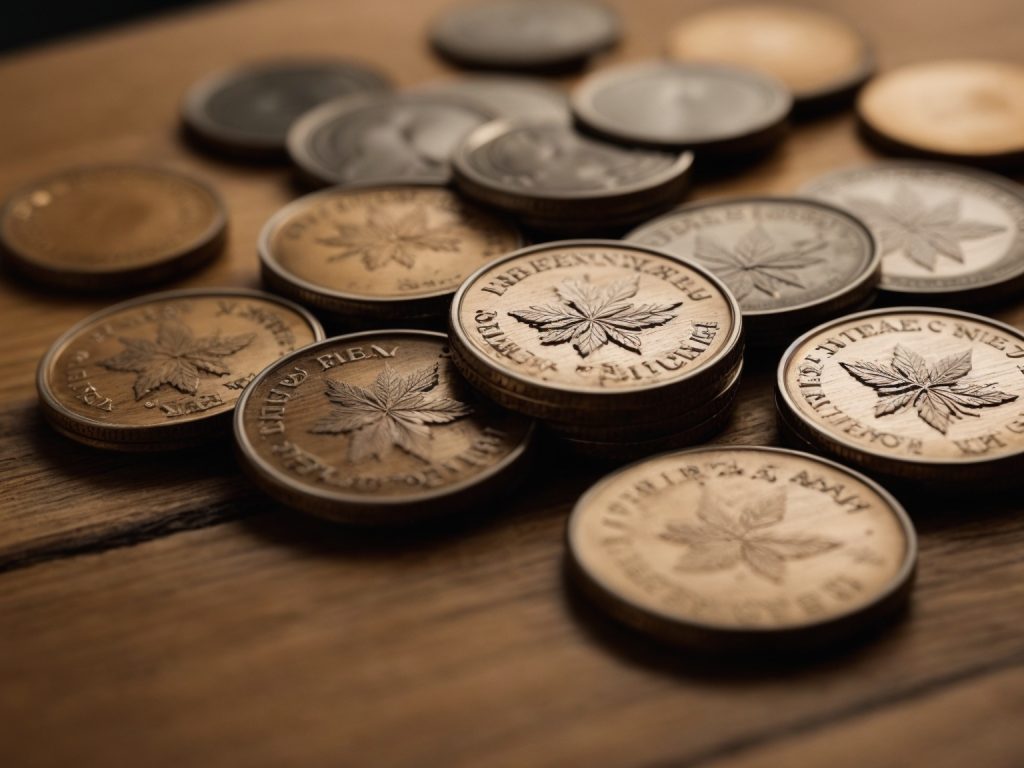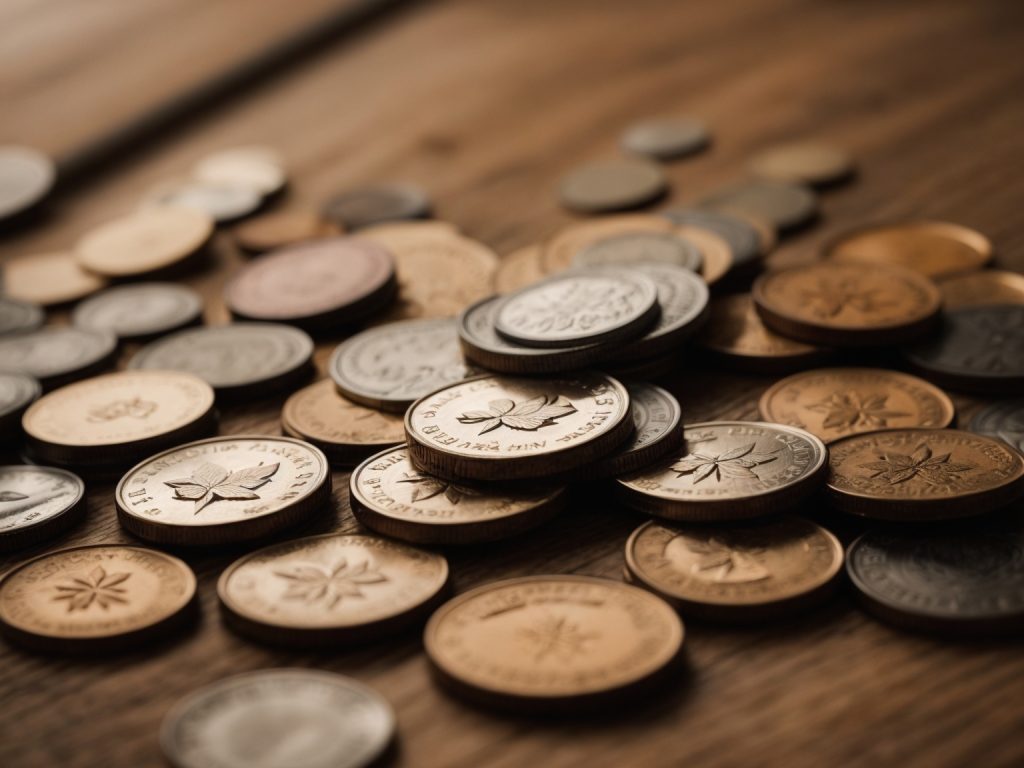If you’ve ever attended a fair or special event, you may have received a wooden nickel as a token or souvenir. But what exactly are wooden nickels? Essentially, they are wooden tokens that resemble a five-cent coin and can be used as a form of currency for specific promotions or discounts.
Wooden nickels have a long history in the United States, dating back to the Great Depression when coin shortages led some towns to allow limited usage of wooden nickels for transactions. Today, they are often used as promotional items and handouts during grand openings and special events. Some merchants and banks even issue wooden nickels that can be redeemed for a specific item or discount.
While wooden nickels may seem like a novelty item, they hold a special place in American history and continue to be used today in various ways. Whether you collect them as souvenirs or use them to take advantage of special promotions, wooden nickels are a unique and interesting part of American culture.
History of Wooden Nickels

Wooden nickels have a rich history that dates back to the late 19th century. In this section, we will explore the origin of wooden nickels and their popularity and decline over the years.
Origin
The origin of wooden nickels is not entirely clear, but it is believed that they were first used as a promotional item in the late 1800s. The wooden nickel was a way for businesses to promote their products or services and to encourage customers to visit their establishment.
During the Great Depression, wooden nickels gained popularity as a form of emergency currency. Banks in Tenino and Blaine, Washington issued wooden nickels printed on thin wood shingles due to coin shortages. These wooden nickels were accepted as currency by local merchants, and they helped to keep the local economy afloat during tough times.
Popularity and Decline
Wooden nickels reached the peak of their popularity in the 1930s and 1940s. They were used as promotional items by businesses, given away as souvenirs at fairs and festivals, and even used as currency in some areas.
During the 1934 World’s Fair in Chicago, wooden nickels were made as souvenirs for people to take home. The wooden nickels varied in size and design, from the size of an actual nickel to 3 inches in diameter.
However, the popularity of wooden nickels declined in the 1950s and 1960s as plastic tokens became more common. Today, wooden nickels are considered a novelty item and are often used as collector’s items or as a way to commemorate a special event.
In conclusion, wooden nickels have a fascinating history that spans over a century. From their origins as a promotional item to their use as emergency currency during the Great Depression, wooden nickels have played an important role in American history. Although their popularity has declined over the years, wooden nickels remain a unique and interesting part of our cultural heritage.
Manufacturing Process
Wooden nickels are a type of token coin that are made out of wood. They are typically issued by merchants or banks as a promotion, and can be redeemable for a specific item such as a drink. In this section, you will learn about the materials and crafting techniques used to create wooden nickels.
Materials
The most common type of wood used to create wooden nickels is birch. Birch is a hardwood that is easy to carve and has a smooth surface. Other types of wood that can be used include maple, cherry, and walnut. The wood is typically cut into round shapes using a saw or a lathe.
Crafting Techniques
The crafting techniques used to create wooden nickels can vary depending on the manufacturer. However, there are some common techniques that are used by most manufacturers.
Carving
One of the most common techniques used to create wooden nickels is carving. Carving involves using a sharp tool to remove material from the wood to create a design or text. The design or text is typically carved into the surface of the wooden nickel.
Printing
Another technique used to create wooden nickels is printing. Printing involves applying a design or text onto the surface of the wooden nickel using a printing press or other printing method. The design or text is typically printed onto paper, which is then glued onto the surface of the wooden nickel.
Painting
Painting is another technique used to create wooden nickels. Painting involves applying paint onto the surface of the wooden nickel to create a design or text. The paint can be applied using a brush or other painting tool.
Overall, the manufacturing process for wooden nickels involves cutting the wood into round shapes, and then using carving, printing, or painting techniques to create a design or text on the surface of the wooden nickel.
Uses of Wooden Nickels

Wooden nickels have been used for various purposes throughout history. Here are two common uses of wooden nickels:
Trade Tokens
During times of coin shortages, wooden nickels were sometimes used as a substitute for legal tender. For example, during the Great Depression, some towns allowed limited usage of wooden nickels for certain transactions due to coin shortages. Today, some businesses still use wooden nickels as trade tokens that customers can redeem for discounts or other perks.
Promotional Items
Wooden nickels are often used as promotional items that businesses give away as a form of advertising. They can be customized with a business’s logo or message and handed out at events or as part of a marketing campaign. They can also be used as souvenirs for special events or as a way to commemorate an occasion.
Overall, wooden nickels have become a popular item for businesses and organizations to use for marketing and promotions. With their unique look and customizable design, they can be a fun and effective way to get people interested in a product or service.
Collecting Wooden Nickels
If you’re interested in collecting wooden nickels, you’re in for a fun and challenging hobby. Here are some tips to help you get started:
Value
Wooden nickels can range in value from a few cents to several hundred dollars, depending on their rarity and condition. Some collectors focus on collecting wooden nickels from a specific location or event, while others collect them based on a particular design or theme.
When evaluating the value of a wooden nickel, consider the following factors:
- Rarity: How many were produced, and how many are still in circulation?
- Condition: Is the wooden nickel in good condition, or is it damaged or worn?
- Age: How old is the wooden nickel?
- Historical significance: Does the wooden nickel commemorate a significant event or person?
Preservation Tips
To keep your wooden nickel collection in good condition, consider the following preservation tips:
- Store your wooden nickels in a cool, dry place, away from direct sunlight and moisture.
- Handle your wooden nickels with clean hands or gloves to prevent oils and dirt from damaging the surface.
- Use acid-free storage materials, such as archival sleeves or folders, to prevent discoloration or damage.
- Avoid cleaning or polishing your wooden nickels, as this can damage the surface and decrease their value.
By following these tips, you can start building a valuable and interesting collection of wooden nickels. Happy collecting!
Significance in Popular Culture
Idiomatic Use
Wooden nickels have become a part of American culture and are often used idiomatically to warn someone not to be fooled or swindled. The phrase “Don’t take any wooden nickels” is a lighthearted reminder to be cautious in one’s dealings. It is considered a friendly piece of advice among acquaintances or loved ones.
Representation in Media
Wooden nickels have also been used in popular media as a symbol of commemoration or remembrance. In the movie “It’s a Wonderful Life,” George Bailey is given a wooden nickel by his guardian angel Clarence as a reminder of the value of his life. In the TV show “The Simpsons,” wooden nickels are used as a currency in the fictional town of Springfield.
Wooden nickels have also been featured in various songs, such as “Wooden Nickel” by The Four Preps and “Don’t Take Any Wooden Nickels” by The Chordettes.
In addition, wooden nickels have been used as promotional items by businesses and organizations. They are often given out at events and grand openings as a way to commemorate the occasion.
Overall, wooden nickels have become a symbol of commemoration and caution in American culture. Their use in popular media and as promotional items has helped to keep their significance alive.